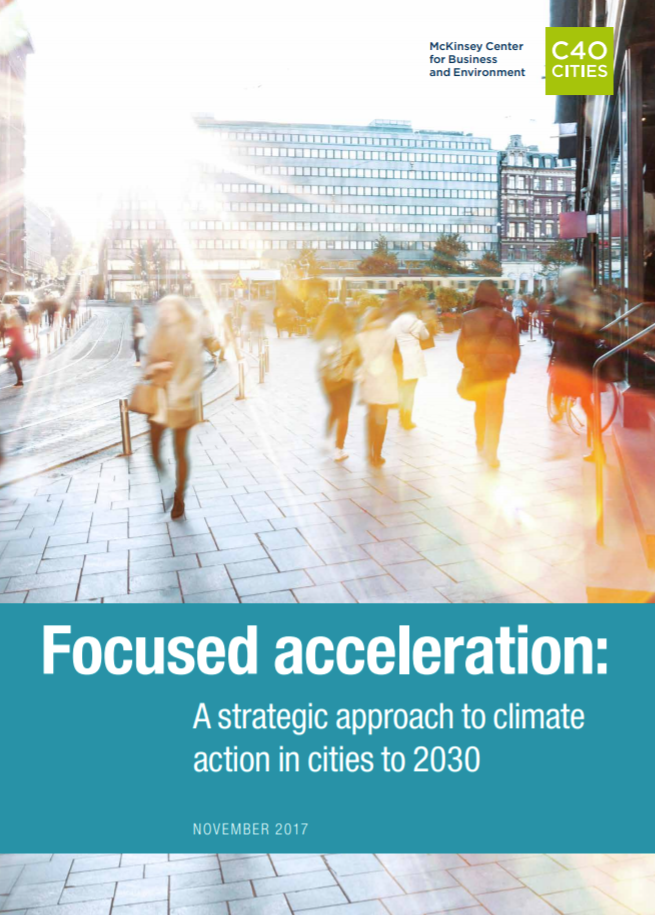A Strategic Approach to Climate Action in Cities—Focused Acceleration
A Strategic Approach to Climate Action in Cities—Focused Acceleration
Summary
Prioritizing efforts in four areas could help cities achieve 90 to 100 percent of the emissions reductions needed by 2030. There is now widespread recognition in the international community that the commitments made by national governments under the Paris Climate Agreement in 2015 cannot be achieved without concerted action by cities. Fortunately, many mayors have shown strong commitment to tackling climate change and a willingness to collaborate to achieve this goal. C40 Cities, a network of mayors of the world’s megacities committed to addressing climate change, responded to the Paris Agreement by publishing an analysis—Deadline 20201—of the emissions-reduction pathway their cities would need to achieve to play their part in keeping global average temperature rise within “safe” limits (below 1.5°C). As individual C40 cities now increase the ambition of their climate plans accordingly, our new report, Focused acceleration: A strategic approach to climate action in cities to 2030, takes that work a stage further by analyzing the biggest opportunities for cities to accelerate the reduction of their carbon emissions. While the technologies and expertise exist to limit the temperature increase to 1.5°C, the challenge is still formidable. With cities already stretched to meet multiple competing priorities, city leaders must determine the critical actions that can change their current emissions trajectory and work proactively with their stakeholders to build and invest in the infrastructure and incentives needed to make significant progress toward those actions. That means prioritizing actions around initiatives that catalyze systemic change. For this report, C40 Cities has partnered with the McKinsey Center for Business and Environment to quantitatively assess the biggest opportunities for emissions reduction and what they will mean for different types of cities around the world. We started with the more than 450 emissions-reduction actions identified in Deadline 2020 and prioritized 12 opportunities across four action areas that have the greatest potential in most global cities to curb emissions and put cities on a 1.5°C temperature-rise pathway through 2030. Our analysis recommends that cities pursue a strategy of “focused acceleration” within these 12 carbon-reduction opportunities. This recommendation is based on a proven management approach that more progress can be made by concentrating on a small number of high-value opportunities than by spreading efforts over hundreds of potential actions. Success will require cities to find creative ways to tackle operational challenges, including aligning stakeholders, supply chains, procurement practices, and financing. By implementing a focused-acceleration approach, cities could achieve 90 to 100 percent of their 2030 emissions targets and build the knowledge and foundational capabilities needed to reach net zero carbon by 2050 (exhibit). At the same time, the incremental investment required to achieve 2030 emissions targets is significant: roughly $50 to $200 per metric ton of CO2 equivalent. However, all opportunities provide a positive return on investment in the mid to long term, whether through direct cash flow for investors (for example, in the case of renewables and efficiency improvements) or broader boosts to economic activity in the city (for example, transit-oriented development). For many opportunities, up-front investments are paid back within five to ten years.Author/Editor
Year
2017
Themes
Strategy & Planning
Sustainable Development Goals
Goal 13 - Take urgent action to combat climate change and its impacts
Goal 11 - Make cities and human settlements inclusive, safe, resilient and sustainable
